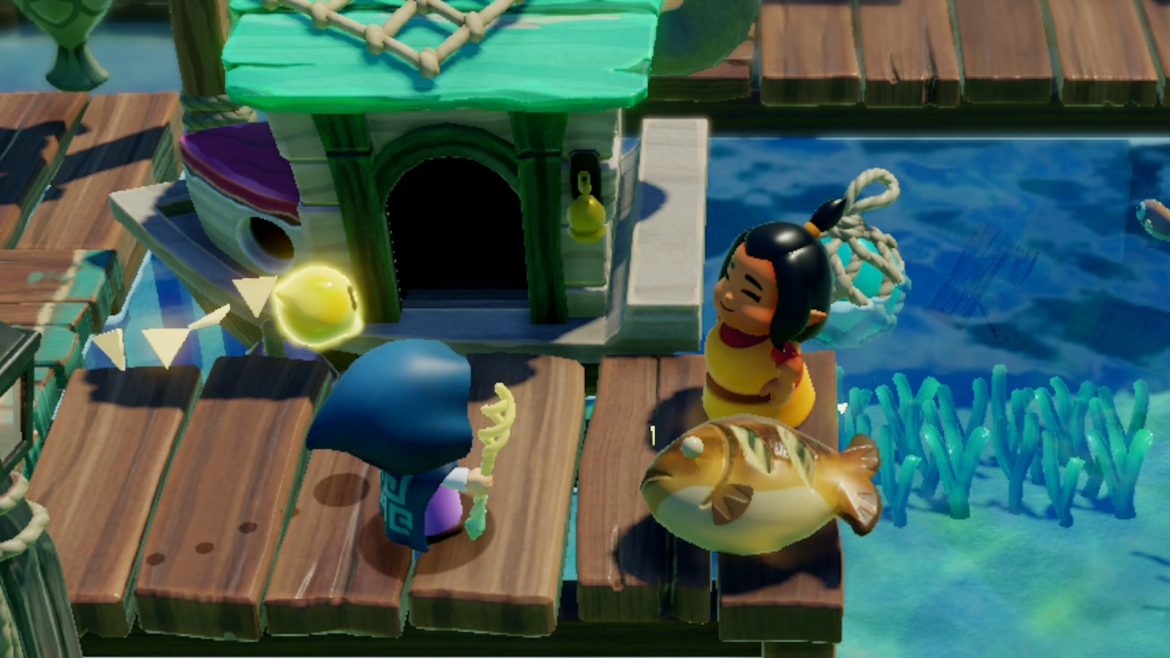Welcome back readers.
I’ve gone and managed a hat-trick for Monday Mulligans! I assure you it has nothing to do with my friend returning the little dock that lets me plug my Steam Deck into my TV. Well, almost nothing!
This Week in Videogame Blogging is a roundup highlighting the most important critical writing on games from the past seven days.
Restless Screens
We’ve been having a bit of discussion on our Discord this week about remakes and the industry’s preference for looking backwards rather than forwards. As it so happens, the two reviews with which we’re beginning this week’s issue concern a remaster and a remake, respectively.
- Star Wars: Bounty Hunter (2024) Review | Gamecritics.com
Elijah Beahm grapples with a shaky port of a Star Wars game slightly out of time. - Silent Hill 2 Remake review – an all-time horror great returns | Eurogamer
Vikki Blake admires Bloober’s own distinct and well-executed take on a survival horror classic.
“It doesn’t matter if you’ve never played Silent Hill 2 before. It also doesn’t matter if you have. Silent Hill 2 Remake’s heady blend of old and new delivers the best horror I’ve played for years, and I suspect that will hold true even for those meeting James for the first time.”
Matters of Substance
Our next section gets a little metatextual, looking at games and crit as material objects and records, as well as initiating some inter-critic dialogue.
- Reading Games Writing: Why Do We Even Want to Be Space Marines? by Dia Lacina | Breaking Arrows
Steven Santana invokes our oldest traditions with a response to Dia’s Space Marine 2 review featured last week. - Out of Reach, Out of Mind | Unwinnable
Phoenix Simms contemplates the ephemeral materiality of games and their texts.
“I believe that many of us don’t fully comprehend yet how important the concept of “out of sight, out of mind” is for games as a medium. The medium is strangely similar in some ways to other mediums like dance and theater, in that it centers ephemeral actions as expression. Various historical projects over the years have grappled and continue to grapple with the way that preservation of games is not just about the hardware and software but about preserving the interactive context of games. Games are commercial objects, yes, but only in those moments where players purchase them and their attendant platforms as products. The full ludic experience is only truly preserved in a narrow band. It happens when the feedback loop between organic bodies interfacing with technology is preserved. Irrespective to whether that sense is via tactility, affect or both. When you strictly define games as a commercial product, as GameStop does, you devalue the prominent place games and their rhetoric now have in our current zeitgeist.”
Pen and Pencil
Now let’s consult a pair of designers offering perspectives on character design and dialogue, respectively.
- Ask a Game Dev
Ask a Game Dev breaks down why sexiness is just one part of character design appeal. - The first line I wrote for No Man’s Sky | Greg Buchanan
Greg Buchanan makes the case for demeaning the cat.
“Typical narrative wisdom holds that there is one surefire way to get people to engage with your story: “Save the Cat”, a term that’s growing as reviled as ‘“the Hero’s Journey”, but which is often inappropriately used as synecdoche for a larger narrative structure. I’m interested here in the actual “Save the Cat” trope that gives the whole model its name: the idea that a protagonist should do something early in a story that makes them likeable and that non-plot-related altruism is a good vehicle for this approach.”
Chronos Trigger
Next we offer two deep delves on games past and present.
- Into the (Money) Pit: Economic Horror at Freddy’s | Gamers with Glasses
Samantha Trzinski peers into the ball pit in a study of post-Reagan economic nostalgia in the latest FNAF. - Shining Force III Scenario 1 Colossus of the Capital: A shining start [Pt1] – Kimimi The Game-Eating She-Monster
Kimimi ventures forth into the first third of the ambitiously interconnected saga that is Shining Force III.
“Shining Force III is not just a story told in three parts, it’s also an interactive work where, thanks to its synchronicity system, events in one tale can have a direct impact in a later instalment. The game keeps careful records of allies and enemies alike saved, spared, or sacrificed, items discovered and passed on, the story adjusting slightly as it goes. Major story beats hit the same notes no matter what, but enough changes to make this grand adventure feel very personal, my own heroic efforts reflected and rewarded not just right now but in future tales too.”
Critical Chaser
Zelda’s a-shakening.
- Why can Zelda only drink smoothies in Echoes of Wisdom? | Polygon
Zoë Hannah goes off on the gendered implications of the princess’ all-liquid diet.
“I really wish the developers let her shovel some tacos down her gullet the way we all do in real life. In fact, let her drip the salsa on her cheek and leave it there all day. Let her go back for seconds. Let her snack between meals. Let her be full!”
Subscribe
Critical Distance is community-supported. Our readers support us from as little as one dollar a month. Would you consider joining them?
Contribute
Have you read, seen, heard or otherwise experienced something new that made you think about games differently? Send it in!


